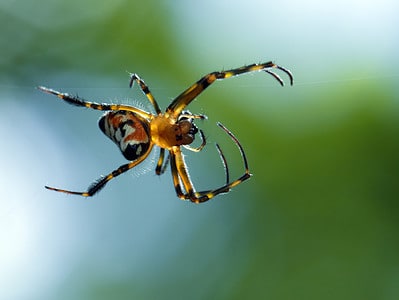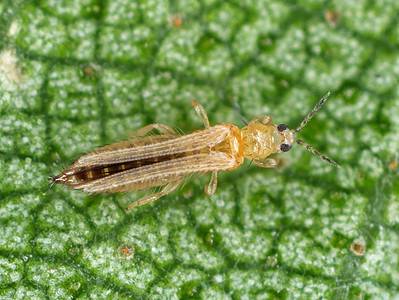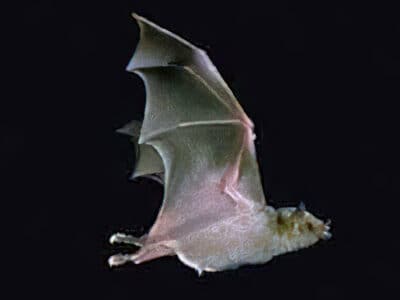Alaskan Klee Kai
Canis lupus
Alaskan Klee Kais love to communicate with their families. In addition to barking, they make other vocalizations, such as yodeling and howling.
Advertisement
Alaskan Klee Kai Scientific Classification
- Kingdom
- Animalia
- Phylum
- Chordata
- Class
- Mammalia
- Order
- Carnivora
- Family
- Canidae
- Genus
- Canis
- Scientific Name
- Canis lupus
Read our Complete Guide to Classification of Animals.
Alaskan Klee Kai Conservation Status
Alaskan Klee Kai Facts
- Name Of Young
- Puppy
- Fun Fact
- Alaskan Klee Kais love to communicate with their families. In addition to barking, they make other vocalizations, such as yodeling and howling.
- Most Distinctive Feature
- Contrasting colored facial mask with a well-defined nose bar down the center of the muzzle, and goggles around the eyes
Alaskan Klee Kai as a Pet:
- General Health
- Energy Level
- Shedability
- Trainability
- Intelligence
- Tendency to Chew
- Size
- Family and kid friendliness
- Yappiness / Barking
- Moderate
- Separation Anxiety
- High
- Preferred Temperature
- Cold climate
- Exercise Needs
- High
- Friendly With Other Dogs
- Group
- Pure bred cost to own
- $1500 to $3000
- Dog group
- Non-sporting
- Male weight
- - lbs
- Female weight
- - lbs
This post may contain affiliate links to our partners like Chewy, Amazon, and others. Purchasing through these helps us further the A-Z Animals mission to educate about the world's species.
View all of the Alaskan Klee Kai images!
The Alaskan Klee Kai’s popularity is growing, and small litter size and its recent addition to the American Kennel Club mean you may wait a while to find a puppy.
With an appearance similar to his larger ancestors, the Siberian and Alaskan Huskies, the Alaskan Klee Kai is an active companion for those who can provide the level of exercise these pups require. The breed comes in three varieties, divided by size. They are intelligent, hardy, and can be stubborn and typically aloof with those they don’t know. The coat color and appearance of the Alaskan Klee Kai are similar to that of a Husky. Their main color is either gray, black, or red with contrasting white color inside the ears, on the lower face, chest, abdomen, and feet.
See all of our expert product reviews.
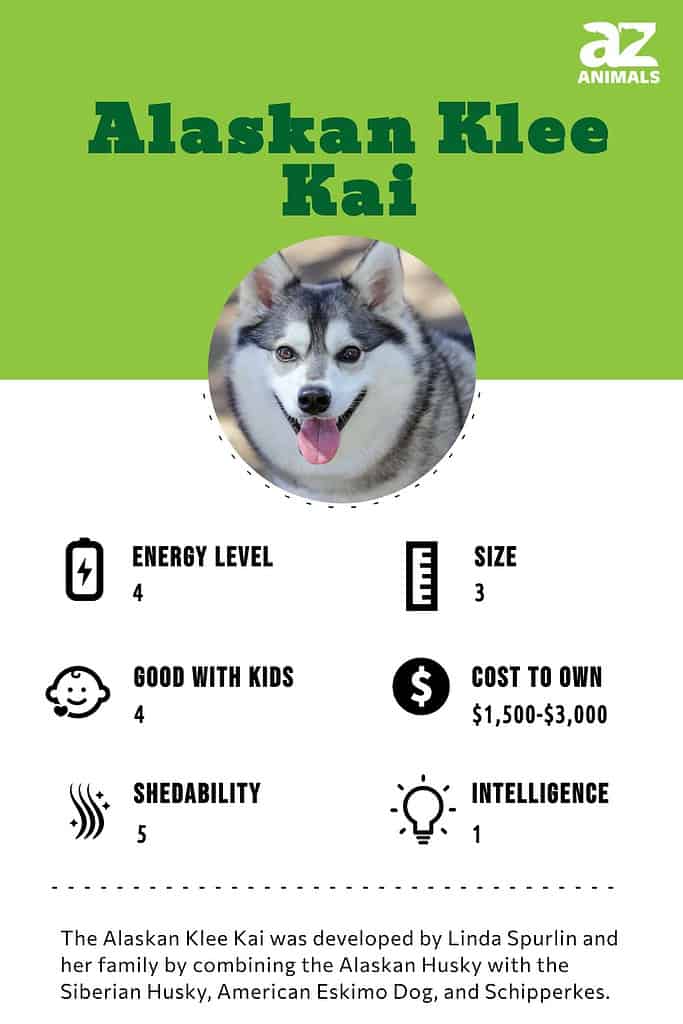
3 Pros and Cons of Owning an Alaskan Klee Kai
| Pros! | Cons! |
|---|---|
| Affectionate: The Alaskan Klee Kai is a good companion for families with children due to their love of play. | Can suffer from separation anxiety: Many of this breed experience separation anxiety, especially if they haven’t released their energy through exercise, and this can result in destructive chewing and digging. |
| Loyal to their family: Alaskan Klee Kais are attentive and loving with their families though they can be cautious around people they don’t know. | Can be difficult to train: Because Alaskan Klee Kais are smart but stubborn, training can be a challenge for an inexperienced pet owner. Enrolling in a puppy training class can help and short, regular training sessions generally yield the best results. |
| Good watchdog: This dog breed’s alert nature makes them excellent watchdogs. | Should never be trusted off lead: The Alaskan Klee Kai has a high prey drive and slow recalls so should always be kept on a leash when walking or outdoors. |
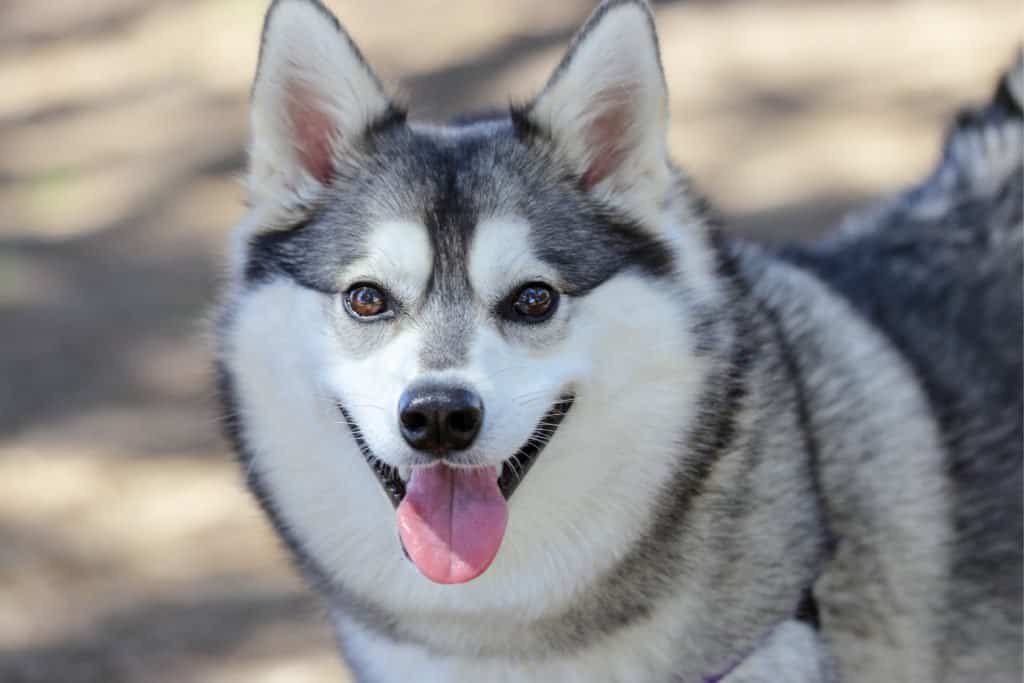
Alaskan Klee Kais are a good choice for families with children because they love to play.
©bon9/Shutterstock.com
Types of Alaskan Klee Kais and Alaskan Klee Kai Mixes
The Alaskan Klee Kai is divided into three categories by size: toy, miniature, and standard. The only difference between them is their adult height. Other specifications, such as temperament and coat markings, are identical.
The small size of the breed, which is around 700 dogs, means that there are not many mixes available. Some people have crossed the dog with the Havanese. The resulting offspring are known as Hava Klee (also styled as Havaklee or HavaKlee). The Hava Klee often inherits the blue eyes, facial features and temperament of the Alaskan Klee Kai. This rare breed will likely do well in small spaces but is very active and high-energy so will need to play and interact with people regularly.
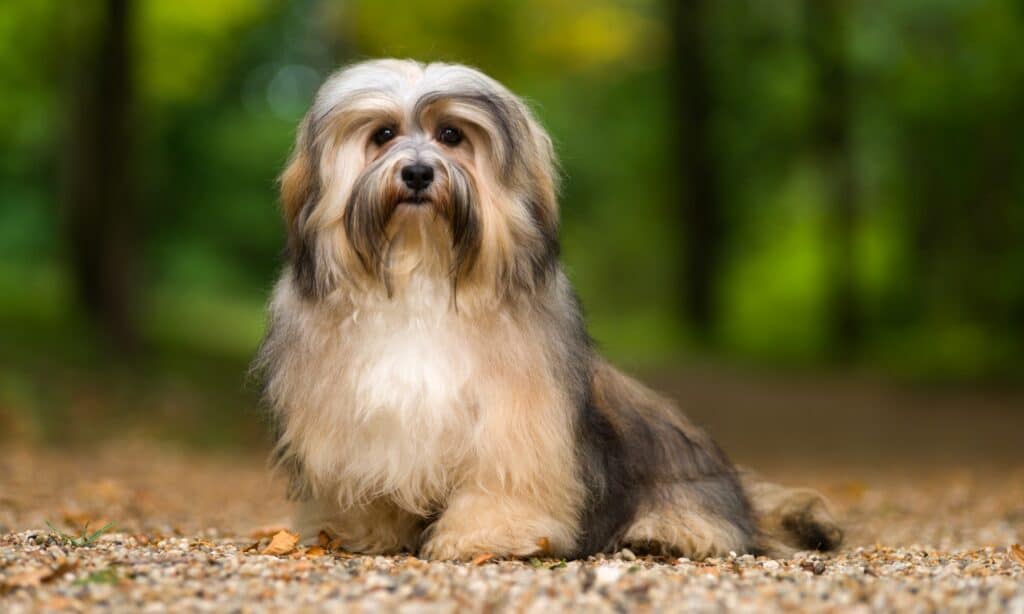
The Alaskan Klee Kai has been crossed with the Havanese to create the Hava Klee.
Health and Entertainment for your Alaskan Klee Kai
See all of our expert product reviews.
©iStock.com/Dorottya_Mathe
Evolution and Origins
Some commonly believed facts about this dog are not true. It is not simply a miniature Husky, but its own distinct breed, developed as companions, while Huskies are a working breed.
The Alaskan Klee Kai, which translates as “small dog” in the indigenous Athabaskan dialect, was developed in Wasilla, Alaska in the 1970s and 1980s by Linda Spurlin and her family in response to those who loved the Siberian Husky but wanted a more compact breed. To avoid creating unhealthy dogs that could have resulted from breeding extra-small huskies, the Spurlins bred the Alaskan Klee Kai by combining the Alaskan Husky with the Siberian Husky, American Eskimo Dog, and Schipperkes.
Although the breed is established and recognized by the American Kennel Club in 2020, it is still considered rare.
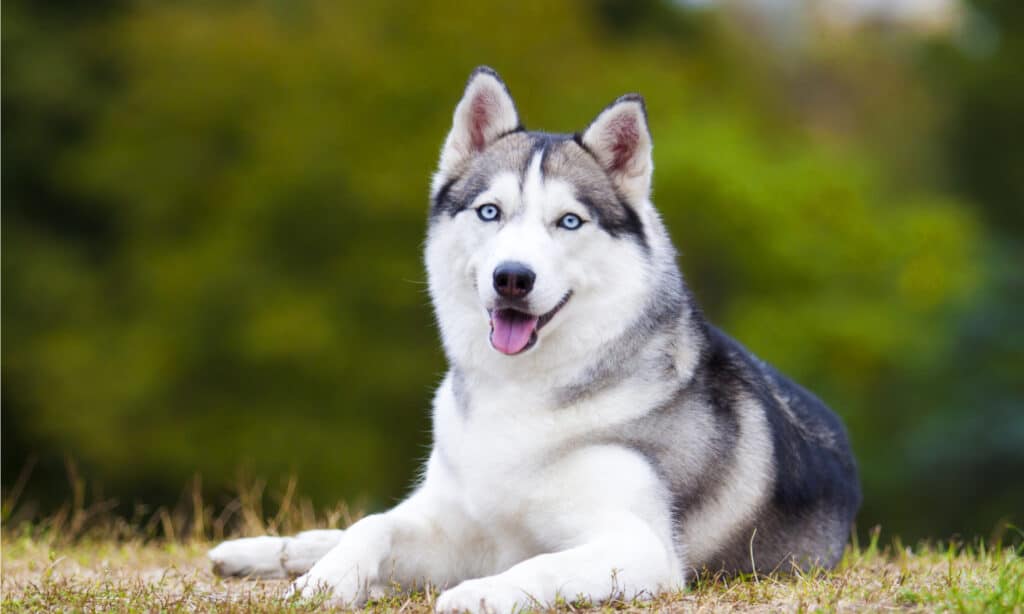
This breed was developed due to a demand for a more compact, smaller Siberian husky.
©Sbolotova/Shutterstock.com
Size and Weight
The Alaskan Klee Kai is divided into toy, miniature, and standard. Their size and weight determine which class they are grouped in.
| Height (Toy): | 13 inches or less |
| Weight (Toy): | 6 to 12 pounds |
| Height (Miniature): | 13 to 15 inches |
| Weight (Miniature): | 10 to 18 pounds |
| Height (Standard): | 15 to 17.5 inches |
| Weight (Standard): | 16 to 25 pounds |
Common Health Issues
One of the facts that have prevented many genetic conditions in the breed is their lack of popularity. Since it is not a highly popular breed, it has been saved from some of the over-breeding damage that has affected other breeds. However, the small gene pool of the Alaskan Klee Kai makes it very important to get your pup from a reputable breeder or rescue.
Some health conditions that the Alaskan Klee Kai is prone to include the following:
- thyroid and cardiac conditions
- liver disease
- factor VII deficiency
- juvenile cataracts
- patellar luxation
- pyometra.
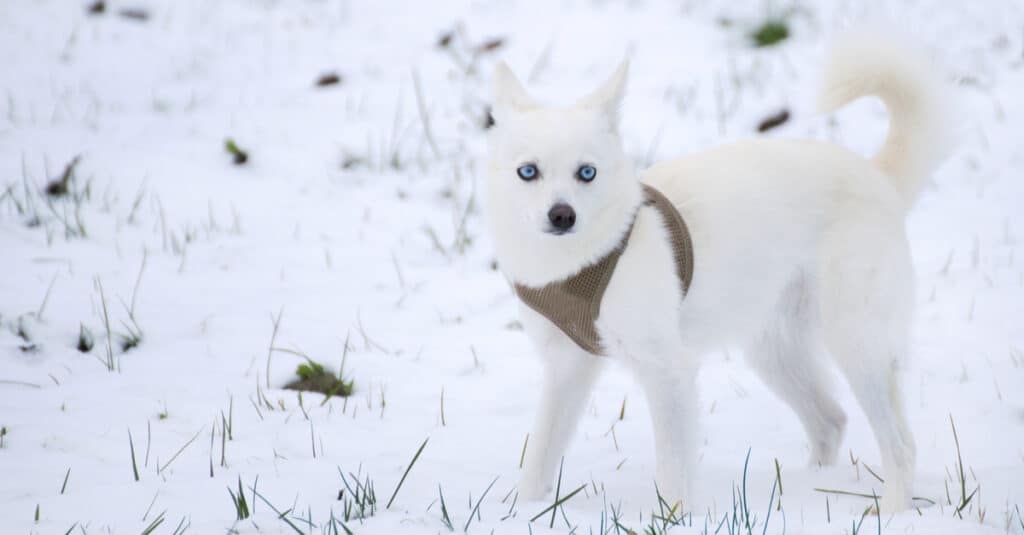
The Alaskan Klee Kai is prone to health issues such as thyroid and cardiac conditions.
©Caro M/Shutterstock.com
Temperament
Cautious or even aloof around strangers, the breed is attentive and loving with his family. He can be nervous around small children, so spending time on socialization is important. The Alaskan Klee Kai’s alert nature makes him an excellent watchdog.
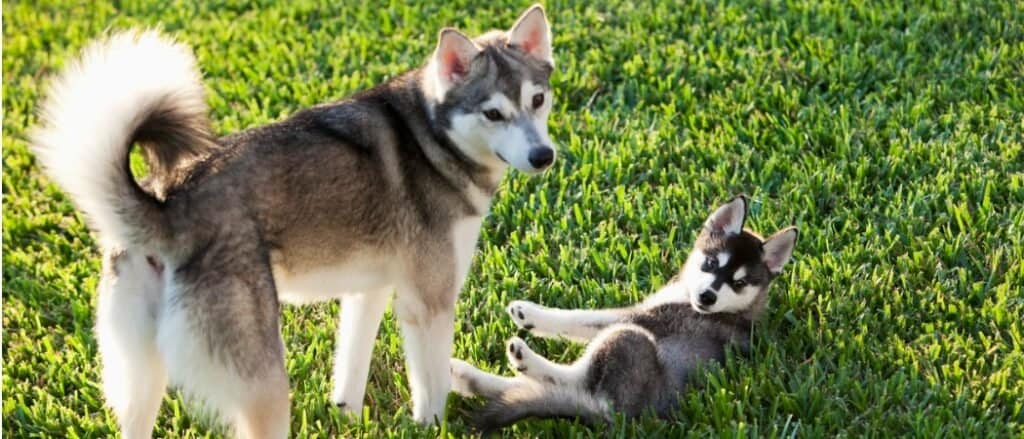
The Alaskan Klee Kai makes a great watchdog due to its alert nature.
©iStock.com/kali9
How to Take Care of an Alaskan Klee Kai
The Alaskan Klee Kai is an attractive, personable dog, which makes it a popular choice for those looking for a companion. It is important to keep in mind that the breed needs regular exercise, can be stubborn and requires socialization to prevent shyness. While they are a great pet for many people, they aren’t always the best choice for a first-time dog owner.
The Best Dog Food for the Alaskan Klee Kai
Plan to feed your pup at least twice a day. The amount you feed is determined by the adult size of your pup— standard pups will eat more than toy-sized pups. Regardless of how much and how often you feed, be sure your pup has access to clean, fresh water as well.
Alaskan Klee Kai dogs are high-energy and they can be susceptible to some health complications. So be sure to choose dog food that supports your Alaskan Klee Kai dog’s health from the inside out. One good course of action is selecting a well-rounded organic dog food.
Since thyroid issues can be a concern with the Alaskan Klee Kai, Purina Beyond Organic High Protein Dry Dog Food & Wet Dog Food cuts out a lot of the additives that can disrupt the delicate endocrine system.
The top ingredient is free-range chicken, so you know your Alaskan Klee Kai is getting the necessary nutrients like protein, vitamins, and minerals. The balanced nutrition and absence of added growth hormones or antibiotics, artificial dyes, preservatives, flavors, or synthetic pesticides/fertilizers let you rest a little easier about your Alaskan Klee Kai’s immune and endocrine systems, heart, and liver.
Try out Purina Beyond Organic High Protein dog food, available on Chewy and Amazon.
- Beyond Organic non-GMO dog food pate with free-range chicken
- No prohibited synthetic pesticides or fertilizers
- Added vitamins and minerals and with no artificial colors, flavors or preservatives
- No corn, wheat, soy or poultry by-product meal
Maintenance and Grooming
The breed has a double coat. To minimize hair in the house and keep your Alaskan Klee Kai looking its best, plan on grooming a few times a week. These dogs will also experience significant shedding twice a year when they lose their undercoat. Plan on daily brushing for the week or two this happens each spring and fall.
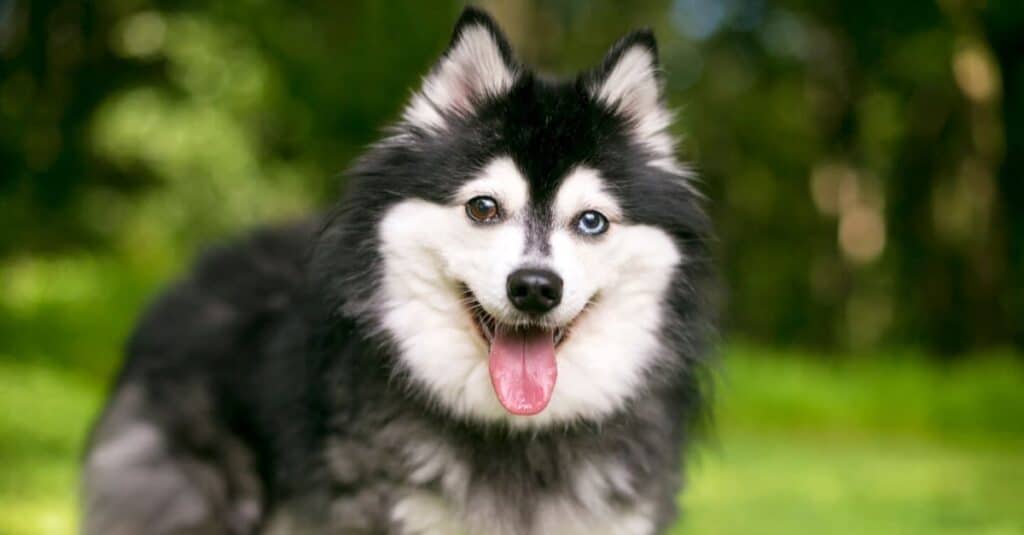
The Alaskan Klee Kai has a double coat and experiences significant shedding when it loses its undercoat.
©Mary Swift/Shutterstock.com
Training
This breed is smart but can also be stubborn. The combination makes training a challenge for the inexperienced pet owner. Enrolling in a puppy training class as soon as possible or working with experienced training can ease frustration for both you and your dog. Patience and short, frequent training sessions typically yield the best results.
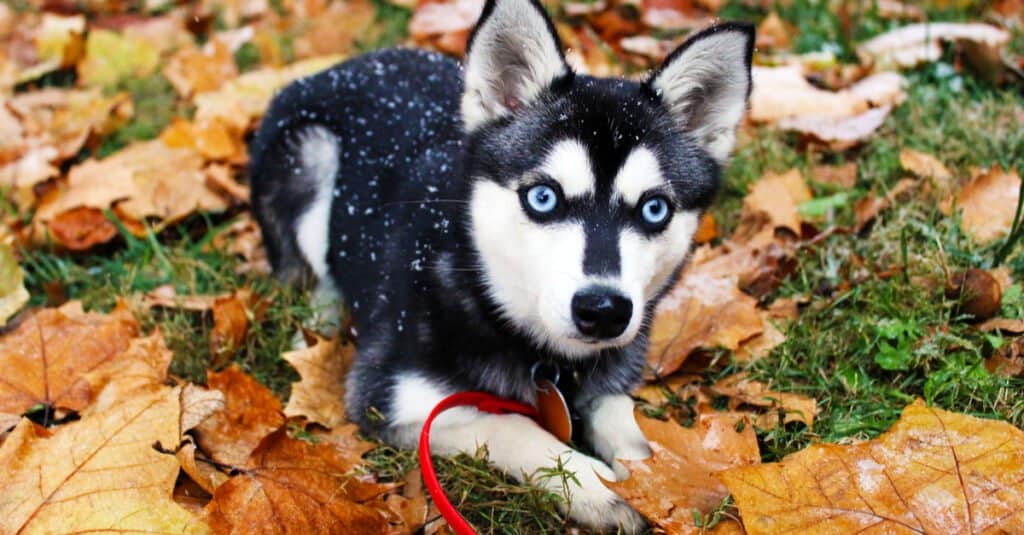
The Alaskan Klee Kai’s mix of intelligence and stubbornness can make training a challenge.
©Momick/Shutterstock.com
Exercise
Although the Alaskan Klee Kai isn’t a large breed, these dogs are active. A fenced yard that allows them to burn off energy while keeping them safe is important. Active play is necessary because when left alone in the yard for long periods their boredom may take on destructive tendencies.
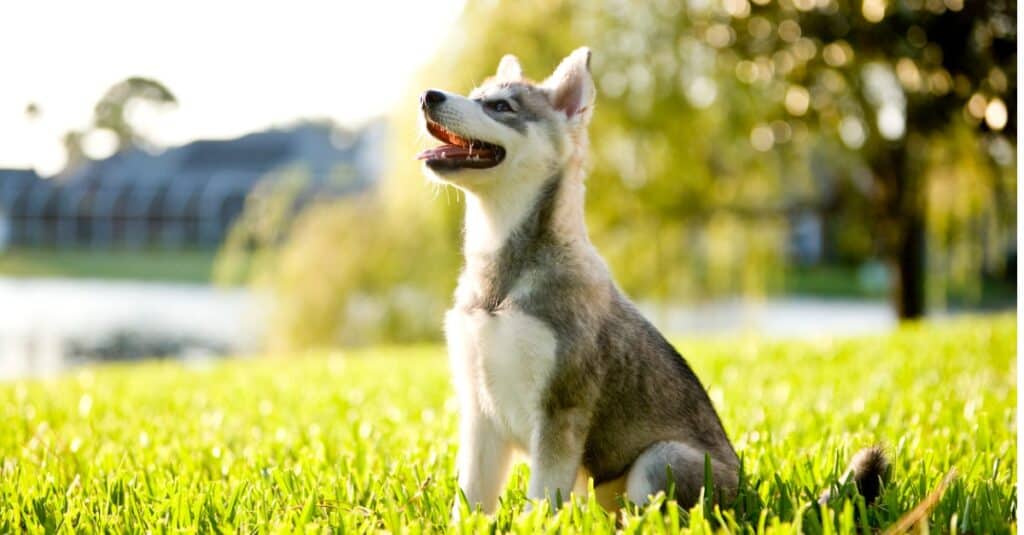
Alaskan Klee Kais are active and need daily exercise.
©Golden Pixels LLC/Shutterstock.com
Puppies
The litter size of the Alaskan Klee Kai is between one and five puppies. One of the facts that drive up prices on the breed is the scarcity of available pups. One option is searching for a dog available for adoption. Rescues are often home to young dogs who ended up not being a good fit for their initial family.
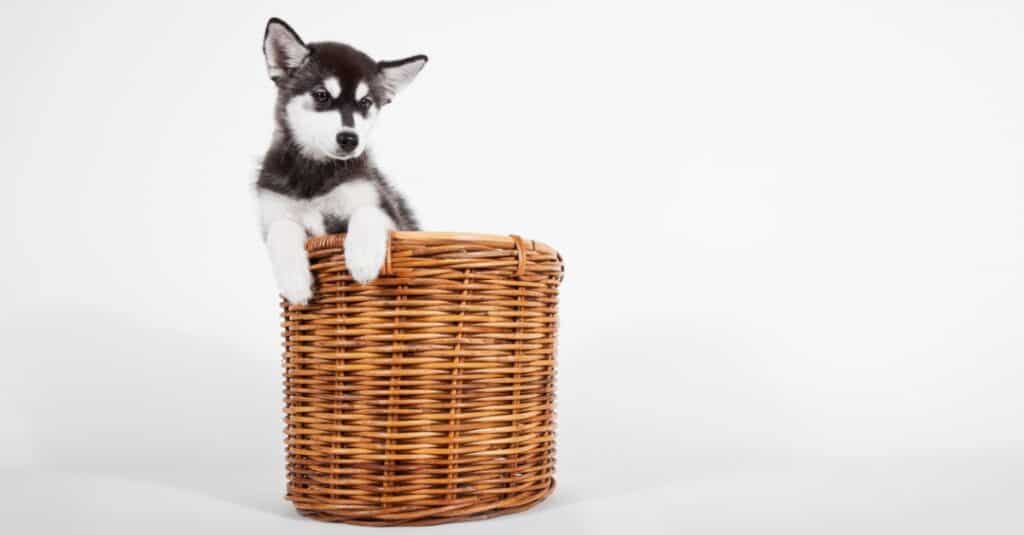
The cost of an Alaskan Klee Kai could be higher as puppies are not readily available.
©iStock.com/kali9
Alaskan Klee Kai and Children
Alaskan Klee Kais are good companions for families with children. Their high energy level and love of play make them a rewarding pet, particularly for those with a fenced yard.
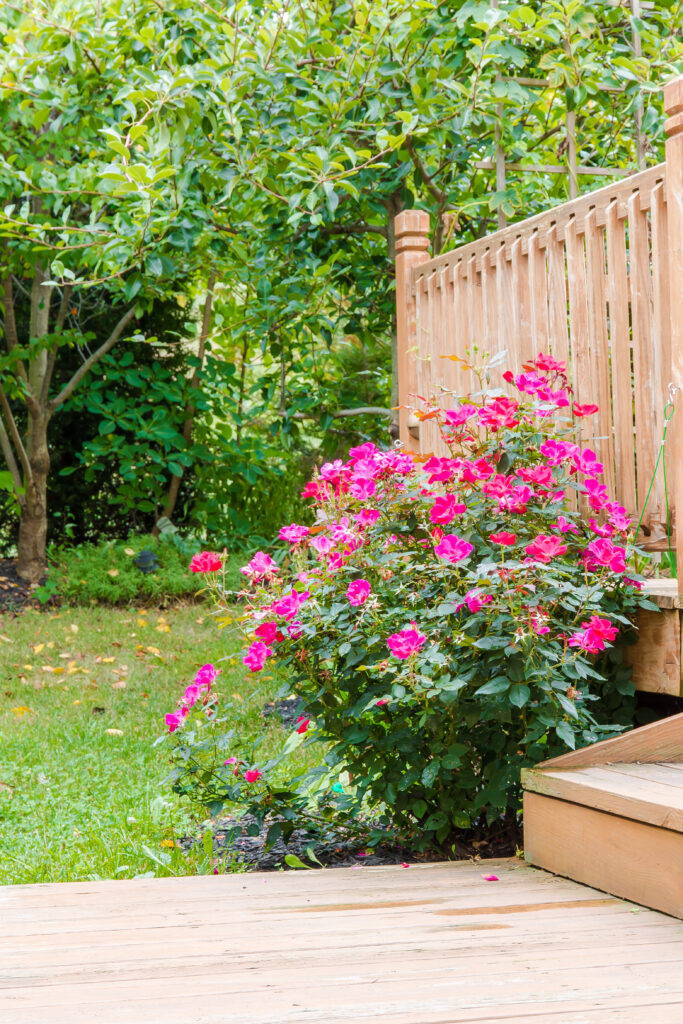
Having a fenced yard helps the Alaskan Klee Kai enjoy safe play.
©iStock.com/volgariver
Dogs Similar to Alaskan Klee Kais
Due to the small number of Alaskan Klee Kais available each year, from either breeders or rescues, you may be curious about similar breeds. The American Eskimo Dog and Keeshond are both smaller dogs, bred for companionship, that have a similar appearance.
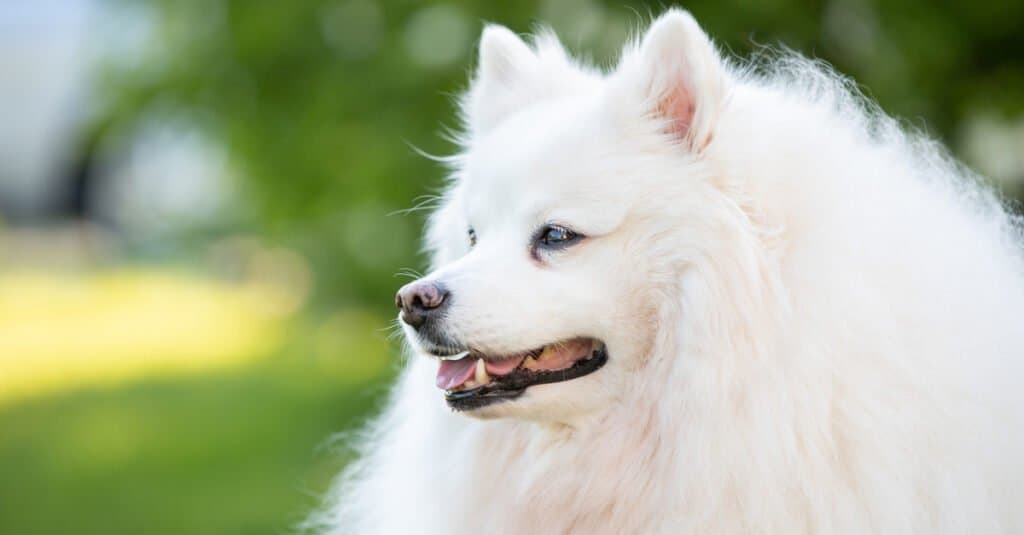
The American Eskimo is smaller than the Alaskan Klee Kai.
©Hendrickson Photography/Shutterstock.com
Alaskan Klee Kai vs. Siberian Husky
Many people assume that the Alaskan Klee Kai is a miniature Siberian Husky, but that isn’t true. It is a distinctive breed, developed to be a companion dog. Some common traits shared by the two breeds include their tendency toward slow recalls, which means neither breed should be trusted off-lead, and their ability to escape from yards, kennels, and other types of confinement.
Differences between the breed, along with size, include temperament and trainability. While the Siberian Husky is a friendly, sociable pup, Alaskan Klee Kais require frequent socialization from a young age and tend to be shy. The Alaskan Klee Kai is also more trainable than the independent and distractable Siberian Husky.
Finally, the Siberian Husky’s average litter size is larger, at between 4 and 8 puppies.
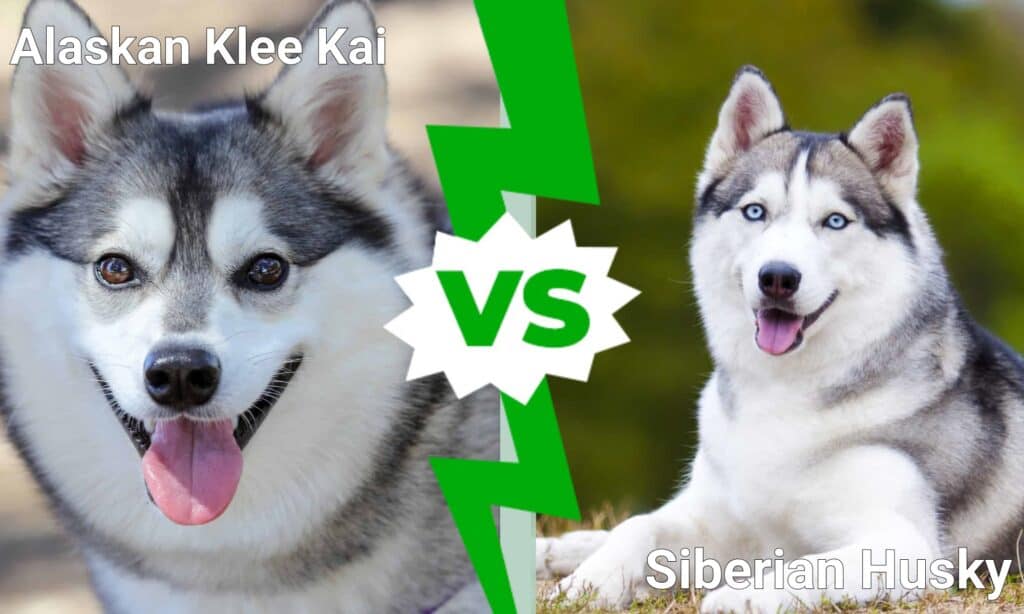
Famous Alaskan Klee Kais
While there are not any specific dogs that have achieved fame, especially due to the rareness of the breed, there are some famous owners of Alaskan Klee Kais.
Celebrity couple Jonas Brothers singer Joe Jonas and actor Sophie Turner used to own two Alaskan Klee Kais, the first named Porky Basquiat and the second, Waldo Picasso, who was killed in a car accident in 2019. The breed’s popularity grew following the TV appearance during the NFL draft in 2020 of an Alaskan Klee Kai called Nike owned by Bill Belichick, head coach of the New England Patriots football team.
Popular Names for Alaskan Klee Kais
Popular names for the breed often refer to its cold-natured origin. Popular names include:
- Kodiak
- Atka
- Igloo
- Yukon
Alaskan Klee Kai FAQs (Frequently Asked Questions)
How much does the Alaskan Klee Kai cost to own?
The price of an Alaskan range from $1500 to $3000. They are generally a healthy breed, but be sure to budget for training lessons. They have a relatively long lifespan, so acquiring one is a commitment. Small litter size and the recent addition to the American Kennel Club mean you may wait a while to find a puppy.
Is the Alaskan Klee Kai good with kids?
The playful energy of the Alaskan Klee Kai makes it a great companion for children.
How long does the Alaskan Klee Kai live?
The average lifespan of the breed is between 13 and 16 years, with some individuals being reported to live up to 20 years.
Are Alaskan Klee Kais good pets?
The breed is companionable and loyal. As long as you can provide sufficient exercise and handle their stubborn streak, they make a great pet. The high price and low supply make them difficult to acquire.
What is bad about an Alaskan Klee Kai?
The breed can be stubborn, so training is a must. They are also escape artists and can be shy if not well-socialized. This is not a good choice for you if shedding bothers you.
What are Alaskan Klee Kais mixed with?
Breeders developed the Alaskan Klee Kai through careful mixing of Siberian and Alaskan Huskies with the American Eskimo, Spitz, and Schipperke to create a breed that looks similar to the Siberian Husky but smaller and for use as a companion.
Are Alaskan Klee Kais easy to own?
For a dog owner with experience training, and who has time to provide daily exercise, the Alaskan Klee Kai makes a nice companion. Its stubborn nature, frequent shedding, and desire to roam make it a more high-maintenance choice than many breeds.
What's the difference between the Klee Kai and the Pomsky?
The Pomsky grows larger than the average Klee Kai, and Klee Kais are purebred dogs recognized by the AKC. Pomskys are a hybrid breed.
What are the key differences between the Alaskan Klee Kai and Alaskan husky?
The key differences between the Alaskan Klee Kai and Alaskan husky are appearance, energy levels, and usefulness.
Thank you for reading! Have some feedback for us? Contact the AZ Animals editorial team.
Sources
- Alaskan Klee Kai Club of America, Available here: https://www.akkcoa.org/about-the-breed
- American Kennel Club, Available here: https://www.akc.org/dog-breeds/alaskan-klee-kai/
- Pet MD (1970) https://www.petmd.com/dog/breeds/c_dg_alaskan_klee_kai Jump to top









